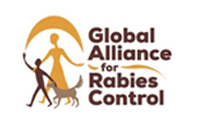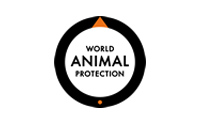Beran and Frith 1988
Beran, G. W., & Frith, M. (1988). Domestic Animal Rabies Control: An Overview. In Reviews of Infectious Diseases, (Vol. 10). https://academic.oup.com/cid/article/10/Supplement_4/S672/290007
Observational study describing in excess of 25% of free-roaming dogs killed with strychnine baits, often targeting the most accessible dogs who were most likely to be vaccinated, quickly replaced by breeding and immigration of unvaccinated dogs, no reported impact on rabies and described as ‘unfavourable’ to citizens leading to confrontations with dog wardens carrying out culling.
Hossain et al 2011
Hossain M, Bulbul T, Ahmed K, Ahmed Z, Salimuzzaman M, Haque MS, Ali A, Hossain S, Yamada K, Moji K, Nishizono A. Five-year (January 2004-December 2008) surveillance on animal bite and rabies vaccine utilization in the Infectious Disease Hospital, Dhaka, Bangladesh. Vaccine. 2011 Jan 29;29(5):1036-40. https://doi.org/10.1016/j.vaccine.2010.11.052
Provides 5 years of culling data in for 5 towns, including an estimated 22K dogs killed in Dhaka per year, but no reduction in bite cases treated with PEP at the hospital.
Reece and Chawla 2006
Reece, J. F., & Chawla, S. K. (2006). Control of rabies in Jaipur, India, by the sterilisation and vaccination of neighbourhood dogs. Veterinary Record, 159, 379–383. http://www.ncbi.nlm.nih.gov/pubmed/16980523
CNVR of dogs in Jaipur, India 1994-2002; human rabies deaths in areas of Jaipur with CNVR reduced to 0 but increased in areas without CNVR, and number of dogs counted on street survey (6 routes) in CNVR area declined by 28%.
Hasler et al 2014
Häsler B, Hiby E, Gilbert W, Obeyesekere N, Bennani H, et al. (2014) A One Health Framework for the Evaluation of Rabies Control Programmes: A Case Study from Colombo City, Sri Lanka. PLOS Neglected Tropical Diseases 8(10): e3270. https://doi.org/10.1371/journal.pntd.0003270
Retrospective cost-benefit analysis of rabies and dog control in Colombo, Sri Lanka. 172 dog rabies cases per year during 4 years of culling, compared to 68 cases during the 4 years of humane and comprehensive management centred on sterilisation; these 68 cases were declining over the period to just 2 cases in the final year.
Morters et al 2014
Morters M, McKinley TJ, Restif O, Conlan AJK, Cleaveland S, Hampson K, Whay HR, Damriyasa IM and Wood, JLN (2014) The demography of free-roaming dog populations and
applications to disease and population control. Journal of Applied Ecology, 51, 1096–1106. https://doi.org/10.1111/1365-2664.12279
Observational study of a dynamic cohort of dogs in 3 communities in South Africa and Bali, Indonesia. These dogs were not under any intervention. They were followed closely for 3 years – 60-72% of the starting cohort died over the 3 years of observation. Most of the replacement dogs were from outside the community.
Palmas et al 2020
Palmas P, Gouyet R, Oedin M, Millon A, Cassan J-J, Kowi J, Bonnaud E, Vidal E (2020) Rapid recolonisation of feral cats following intensive culling in a semi-isolated context. NeoBiota, 63, 177–200. https://doi.org/10.3897/neobiota.63.58005
Observational study of the culling of cats on the island nation of New Caledonia. 44% of cats culled, but after 3 months the numbers had returned to pre-culling levels, proposed to be driven by compensatory immigration despite the study being done on a peninsular where immigration was presumed to be limited.
Moreira et al 2004
Moreira, E. D., Mendes De Souza, V. M., Sreenivasan, M., Nascimento, E. G., & Pontes De Carvalho, L. (2004). Assessment of an optimized dog-culling program in the dynamics of canine Leishmania transmission. Veterinary Parasitology, 122(4), 245–252. https://doi.org/10.1016/j.vetpar.2004.05.019
Experimental study of a dynamic cohort of dogs undergoing ‘optimised’ culling for leishmaniasis control in Brazil over 32 months. New immigrant dogs made up 44-50% of the cohort each time they were measured, these were usually young and up to 15% were already infected with leishmaniasis when they arrived – high immigration rates were driven by replacement of culled dogs. Incidence of leishmaniasis did not decline over the culling intervention.
Nunes et al 2008
Nunes, C. M., Lima, V. M. F. de, Paula, H. B. de, Perri, S. H. V., Andrade, A. M. de, Dias, F. E. F., & Burattini, M. N. (2008). Dog culling and replacement in an area endemic for visceral leishmaniasis in Brazil. Veterinary Parasitology, 153(1–2), 19–23. https://doi.org/10.1016/j.vetpar.2008.01.005
Observational study of dog culling intervention in Brazil for leishmaniasis control. 61% of the estimate dogs in the study population were culled, 39% of culled dogs were replaced by 1 or more dogs within a mean of just 4 months, replacements were mostly puppies and 42% were positive for leishmaniasis – much higher than the 27% of positive cases in the original population.
Dalla Villa et al 2010
Dalla Villa, P., Kahn, S., Stuardo, L., Iannetti, L., Di Nardo, A., & Serpell, J. A. (2010). Free-roaming dog control among OIE-member countries. Preventive Veterinary Medicine, 97(1), 58–63. https://doi.org/10.1016/j.prevetmed.2010.07.001
Questionnaire survey of 81 state veterinary services asking for their methods and motivations for free-roaming dog control. 61% described killing/euthanasia as part of official policy, 30 of these countries described this as the only method of control used for free-roaming dogs.
Yoak et al 2023
Yoak, A. J., Calinger, K. M., & Hiby, E. (2023). Assessing multiple free-roaming dog control strategies in a flexible agent-based model. Scientific Reports, 13(1). https://doi.org/10.1038/s41598-023-47076-x
Computer simulation of dog population under different management strategies. Populations undergoing control via culling had faster rebounds after culling ceased as compared to management using reproduction control, for example a culling intervention applied for 5 years resulted in the fastest population rebound of roughly 3.06 years.











